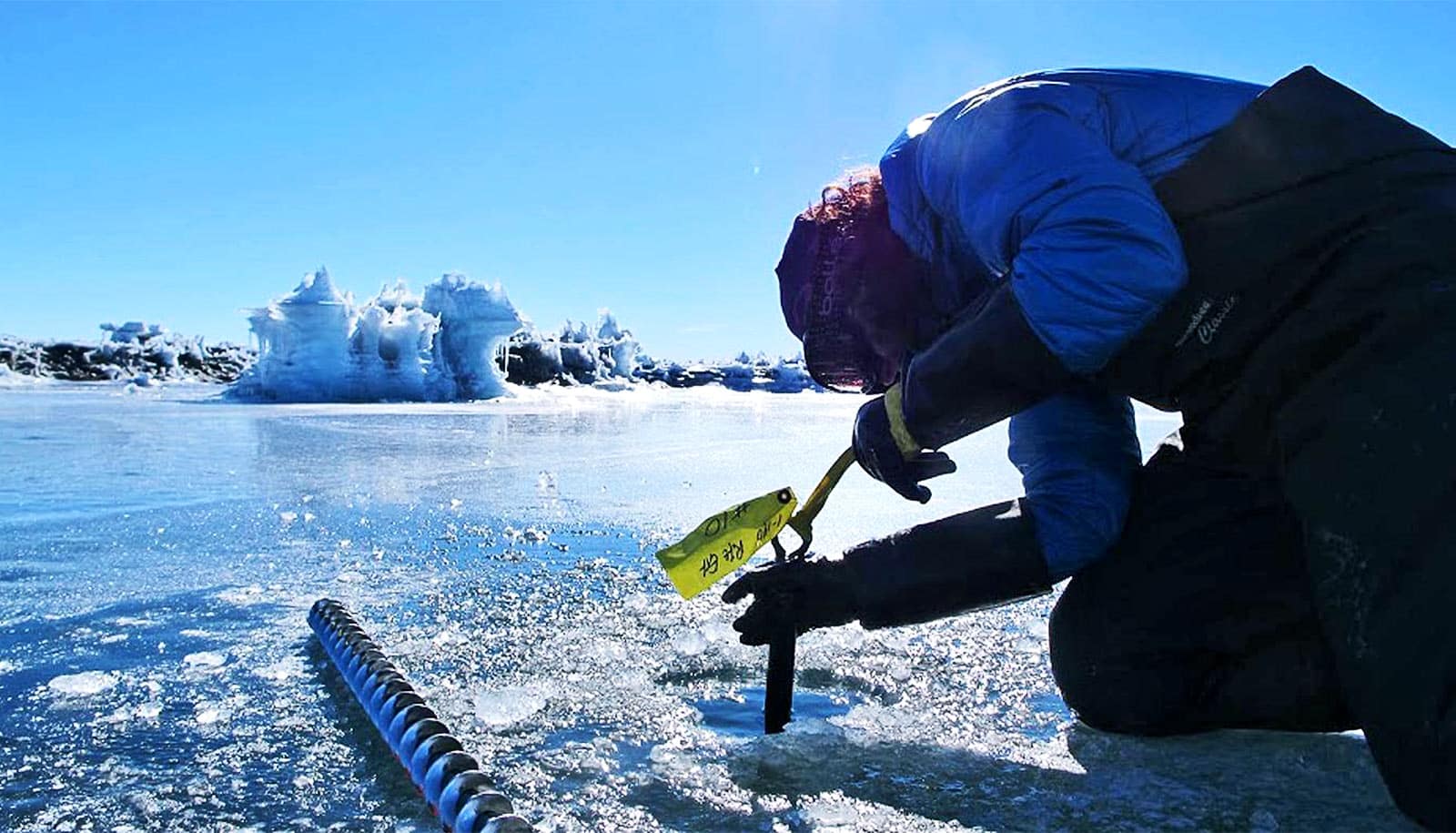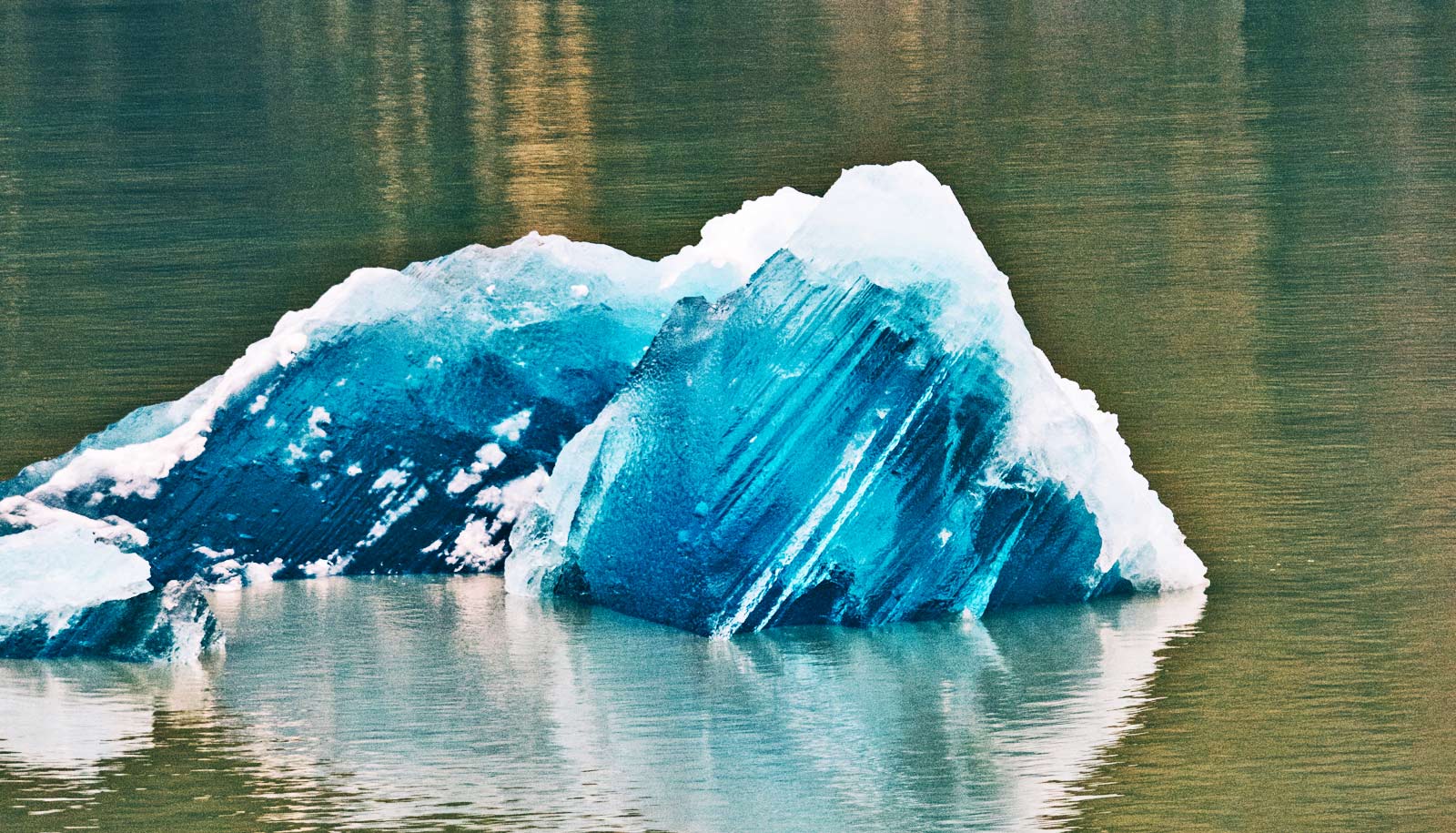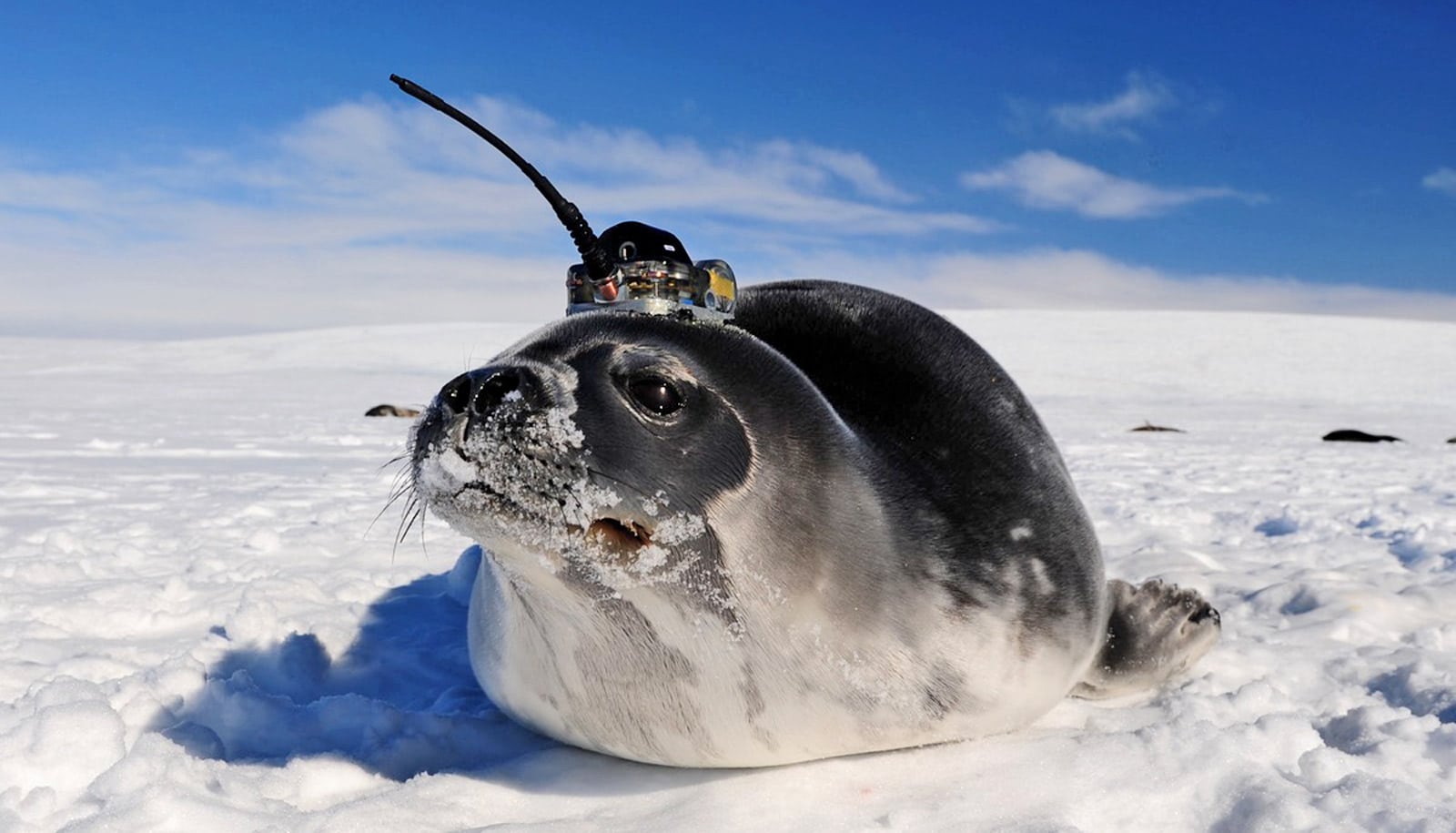Increased freshwater from melting Antarctic ice sheets plus increased wind have reduced the amount of oxygen in the Southern Ocean and made it warmer and more acidic, geoscientists report.
Researchers found Southern Ocean waters had changed when they compared shipboard measurements taken from 1990 to 2004 with measurements taken using a fleet of microsensor-equipped robot floats from 2012 to 2019. The observed oxygen loss and warming around the Antarctic coast—much larger than a climate model predicted—could have implications for predictions of ice melt.
The discovery drove the research team to improve current climate change computer models to better reflect the environmental changes around Antarctica.
“It’s the first time we’ve been able to reproduce the new changes in the Southern Ocean with an Earth system model,” says Joellen Russell, a professor of geosciences at the University of Arizona and coauthor of the paper in Nature Geoscience.
“One out of every eight carbon molecules that comes out of your tailpipe goes into the Southern Ocean.”
The research is the first to incorporate the Southern Ocean’s increased freshwater plus additional wind into a climate change model, Russell says. The team used the National Oceanic and Atmospheric Administration’s ESM2M model.
Previously, global climate change models did not predict the current physical and chemical changes in the Southern Ocean, she says.
“We underestimated how much influence that added freshwater and wind would have. When we add these two components to the model, we can directly and beautifully reproduce what has happened over the last 30 years.”
A better model of Southern Ocean winds
Now, models will be able to do a better job of predicting future environmental changes in and around Antarctica, she says, adding that the Southern Ocean takes up most of the heat anthropogenic global warming produces.
“One out of every eight carbon molecules that comes out of your tailpipe goes into the Southern Ocean,” Russell says. “Our model says that in the future, we may not have as big of a carbon sink as we were hoping.”
“I’m proposing to NASA a satellite to go hunt for the missing wind.”
First author Ben Bronselaer led the effort to improve the climate models when he was a postdoctoral research associate in Russell’s lab. He is now a meteorological and oceanographic engineer at the British multinational oil and gas company BP in London.
To develop a better understanding of the Earth’s climate system, scientists constantly refine their global climate change models. As part of that effort, the Southern Ocean Carbon and Climate Observations and Modeling Project, or SOCCOM, studies the Southern Ocean and its influence on climate.
Russell leads the SOCCOM group that improves how computer models of global climate represent the Southern Ocean. She’s been studying the ocean around Antarctica for 25 years.
“My first research cruise in the Southern Ocean was in 1994. It was in the winter in the deep South Pacific. I had grown up in Alaska, and I knew what a blizzard felt like—and I had never felt winds like that before,” she says. The extreme Antarctic winter winds have “obsessed” her ever since, she says.
Russell and other scientists have taken shipboard measurements in the waters around Antarctica for decades, but winter conditions make that extremely difficult. Moreover, the extent of the winter sea ice makes taking nearshore measurements from ships impossible, she says.
Hunt for the ‘missing wind’
The robot floats SOCCOM began deploying in 2014 have solved that problem.
“The robot floats can go under the winter ice and work all winter long collecting data. The robot floats are the revolution in how we can even imagine looking at the evolution of the ice and the ocean,” she said. “We had never seen the winter-time chemistry under the ice.”
The floats revealed how much Antarctic waters had changed in the last several decades—a development global climate models had not predicted.
Bronselaer, Russell, and their colleagues had previously added additional freshwater from melting ice sheets to climate models, but that revision did not reproduce the recent changes in the Southern Ocean’s chemistry.
Increasing the freshwater and the amount of Antarctic wind in the model solved the problem—now the model correctly represents the current state of Antarctic waters.
The team also used the improved model to forecast conditions in the Southern Ocean. The forecast suggests that in the future, the Southern Ocean may not take up as much carbon dioxide from the atmosphere as previously predicted.
Russell plans to continue pursuing the Antarctic’s winter winds.
“We didn’t observe it—but the model says we need it,” she says. “I’m proposing to NASA a satellite to go hunt for the missing wind.”
Additional researchers are from the National Oceanic and Atmospheric Administration, the University of South Florida College of Marine Science, Princeton University, and the Monterey Bay Aquarium Research Institute. The National Science Foundation funds SOCCOM. NOAA and NASA provide additional support.
Source: University of Arizona



